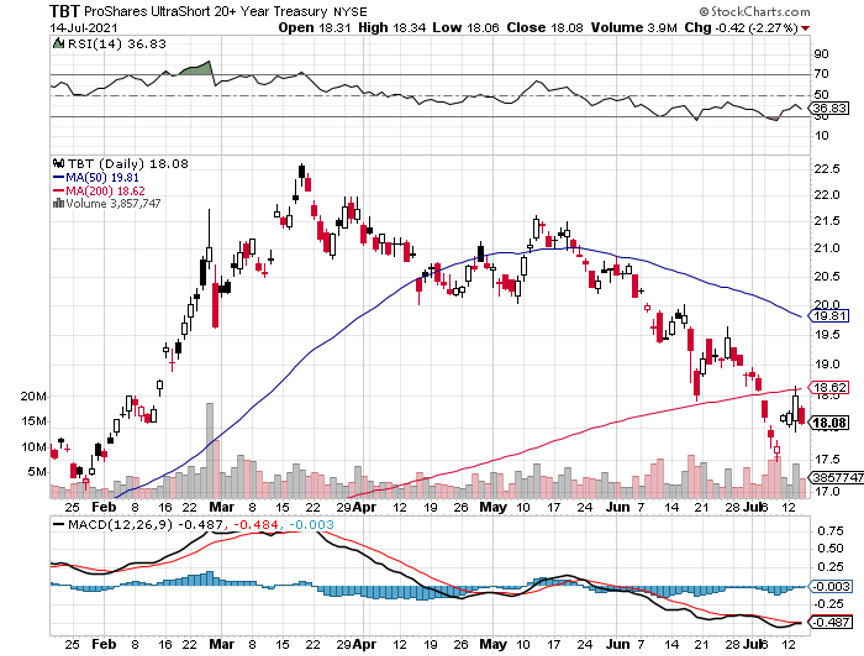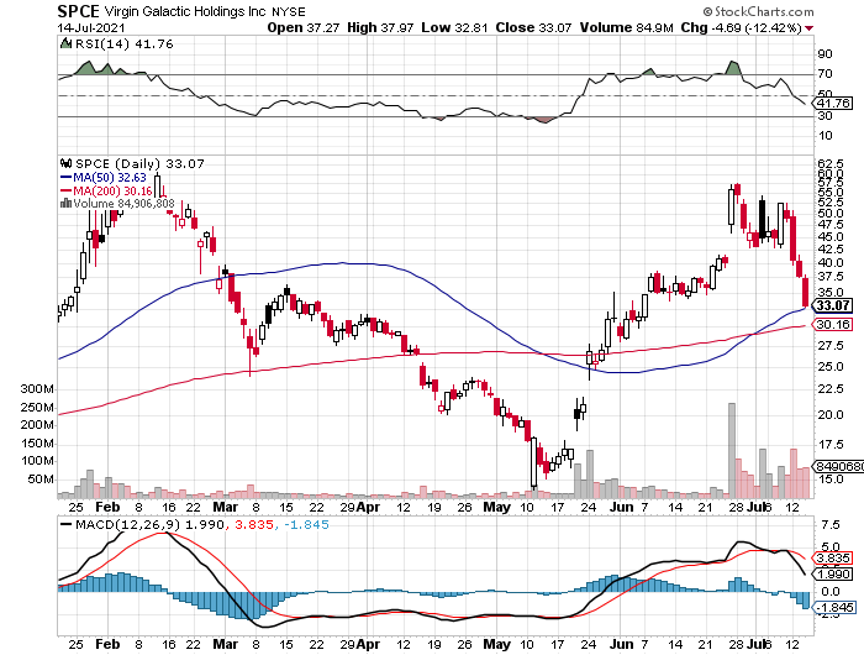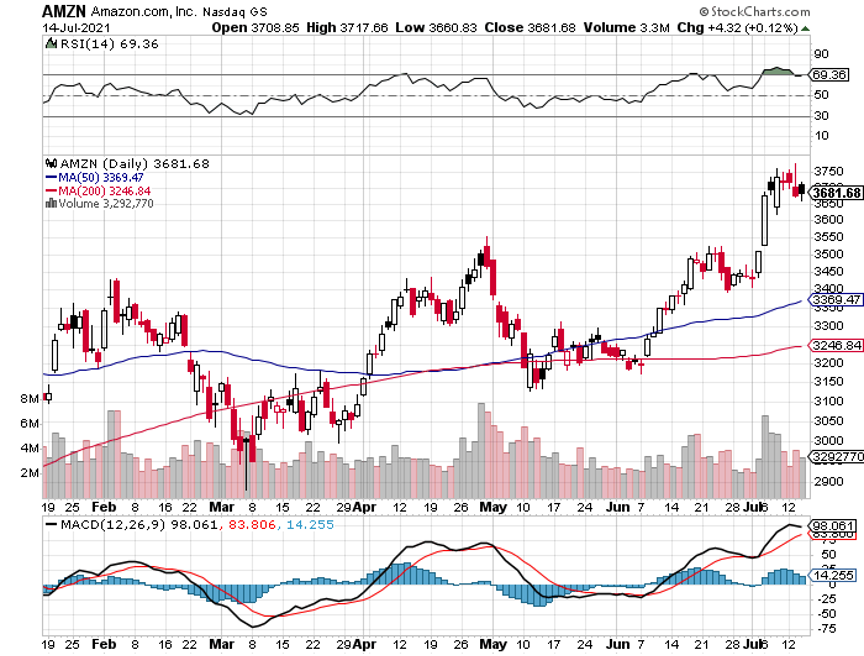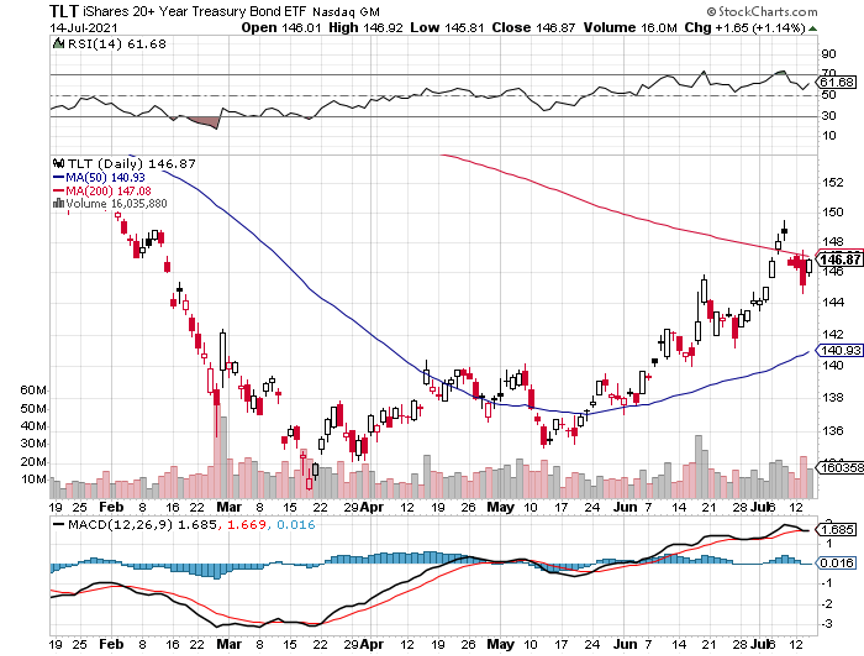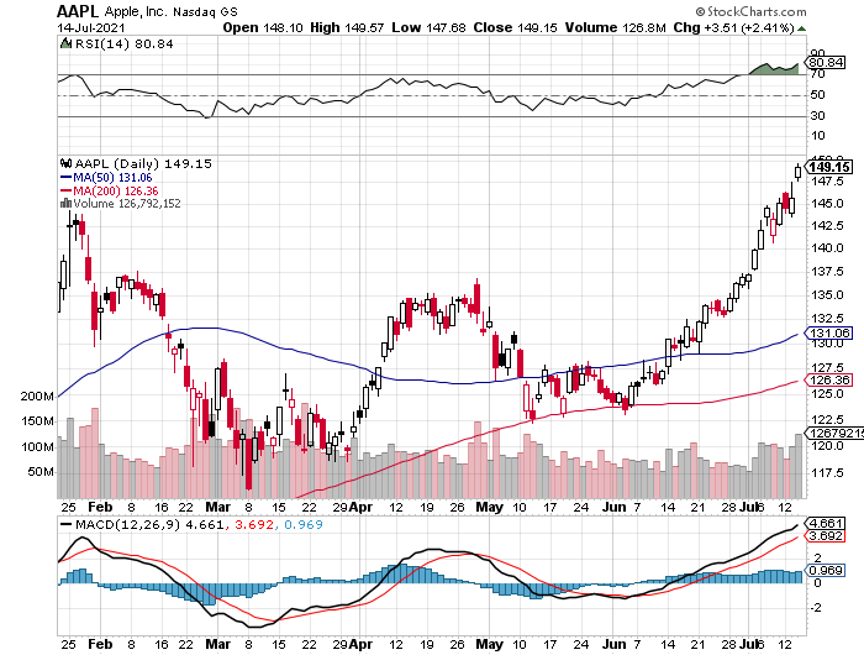| ENTITY/SECURITY | ISIN/CUSIP | RATING TYPE | SOLICITATION STATUS |
|---|
| United States of America senior unsecured treasury bills/notes/bonds | US912810FP85 | Long Term Rating | Unsolicited |
| United States of America senior unsecured treasury bills/notes/bonds | US912810FJ26 | Long Term Rating | Unsolicited |
| United States of America senior unsecured treasury bills/notes/bonds | US912810FF04 | Long Term Rating | Unsolicited |
| United States of America senior unsecured treasury bills/notes/bonds | US912810FB99 | Long Term Rating | Unsolicited |
| United States of America USD 28 bln 2.375% Treasury Notes 15 Jan 2025 | US912810FR42 | Long Term Rating | Unsolicited |
| United States of America senior unsecured treasury bills/notes/bonds | US912810QD37 | Long Term Rating | Unsolicited |
| United States of America senior unsecured treasury bills/notes/bonds | US912810QH41 | Long Term Rating | Unsolicited |
| United States of America senior unsecured treasury bills/notes/bonds | US912810QK79 | Long Term Rating | Unsolicited |
| United States of America senior unsecured treasury bills/notes/bonds | US912810QN19 | Long Term Rating | Unsolicited |
| United States of America senior unsecured treasury bills/notes/bonds | US912810PS15 | Long Term Rating | Unsolicited |
| United States of America senior unsecured treasury bills/notes/bonds | US912810QU51 | Long Term Rating | Unsolicited |
| United States of America senior unsecured treasury bills/notes/bonds | US912810RB61 | Long Term Rating | Unsolicited |
| United States of America senior unsecured treasury bills/notes/bonds | US912828VM96 | Long Term Rating | Unsolicited |
| United States of America senior unsecured treasury bills/notes/bonds | US912828WU04 | Long Term Rating | Unsolicited |
| United States of America senior unsecured treasury bills/notes/bonds | US912810RJ97 | Long Term Rating | Unsolicited |
| United States of America USD 28 bln 1.625% treasury bills/notes/bonds 31-Oct-2023 | US912828T917 | Long Term Rating | Unsolicited |
| United States of America USD 15 bln 3% treasury bills/notes/bonds 15-Feb-2047 | US912810RV26 | Long Term Rating | Unsolicited |
| United States of America USD 34.85 bln 2% treasury bills/notes/bonds 31-Oct-2022 | US9128283C28 | Long Term Rating | Unsolicited |
| United States of America USD 38 bln 2.5% bond/note 15-Jan-2022 | US9128285V80 | Long Term Rating | Unsolicited |
| United States of America USD 38 bln 2.25% bond/note 15-Apr-2022 | US9128286M72 | Long Term Rating | Unsolicited |
| United States of America USD 33.27 bln 1.875% bond/note 31-Jul-2026 | US912828Y958 | Long Term Rating | Unsolicited |
| United States of America USD 45.29 bln 1.5% bond/note 31-Oct-2024 | US912828YM69 | Long Term Rating | Unsolicited |
| United States of America USD 35.35 bln 1.625% bond/note 31-Oct-2026 | US912828YQ73 | Long Term Rating | Unsolicited |
| United States of America USD 43.9 bln 2.375% bond/note 15-Nov-2049 | US912810SK51 | Long Term Rating | Unsolicited |
| United States of America USD 63.78 bln 1.75% bond/note 15-Nov-2029 | US912828YS30 | Long Term Rating | Unsolicited |
| United States of America USD 43.34 bln 1.75% bond/note 30-Jun-2024 | US9128286Z85 | Long Term Rating | Unsolicited |
| United States of America USD 33.83 bln 1.875% bond/note 30-Jun-2026 | US9128287B09 | Long Term Rating | Unsolicited |
| United States of America USD 44.13 bln 1.375% bond/note 31-Jan-2022 | US912828Z609 | Long Term Rating | Unsolicited |
| United States of America USD 54.9 bln 1.375% bond/note 15-Feb-2023 | US912828Z864 | Long Term Rating | Unsolicited |
| United States of America USD 63.01 bln 1.5% bond/note 15-Feb-2030 | US912828Z948 | Long Term Rating | Unsolicited |
| United States of America USD 50.41 bln 3% treasury bills/notes/bonds 15-Aug-2048 | US912810SD19 | Long Term Rating | Unsolicited |
| United States of America USD 41.99 bln 0.5% bond/note 31-May-2027 | US912828ZS21 | Long Term Rating | Unsolicited |
| United States of America USD 46.61 bln 0.5% bond/note 30-Jun-2027 | US912828ZV59 | Long Term Rating | Unsolicited |
| United States of America USD 38.57 bln 2.75% treasury bills/notes/bonds 15-Aug-2021 | US9128284W72 | Long Term Rating | Unsolicited |
| United States of America USD 53.45 bln 0.125% bond/note 31-Jul-2022 | US91282CAC55 | Long Term Rating | Unsolicited |
| United States of America USD 49 bln 0.375% bond/note 31-Jul-2027 | US91282CAD39 | Long Term Rating | Unsolicited |
| United States of America USD 65.41 bln 1.375% bond/note 15-Aug-2050 | US912810SP49 | Long Term Rating | Unsolicited |
| United States of America USD 63.77 bln 0.625% bond/note 30-Nov-2027 | US91282CAY75 | Long Term Rating | Unsolicited |
| United States of America USD 63.77 bln 0.125% bond/note 30-Nov-2022 | US91282CAX92 | Long Term Rating | Unsolicited |
| United States of America USD 61.16 bln 1.875% bond/note 15-Feb-2041 | US912810SW99 | Long Term Rating | Unsolicited |
| United States of America USD 72.99 bln 0.125% bond/note 28-Feb-2023 | US91282CBN02 | Long Term Rating | Unsolicited |
| United States of America USD 74.21 bln 0.5% bond/note 28-Feb-2026 | US91282CBQ33 | Long Term Rating | Unsolicited |
| United States of America USD 61.59 bln 0.25% bond/note 15-Mar-2024 | US91282CBR16 | Long Term Rating | Unsolicited |
| United States of America USD 73.13 bln 1.25% bond/note 31-Mar-2028 | US91282CBS98 | Long Term Rating | Unsolicited |
| United States of America USD 71.95 bln 0.75% bond/note 31-Mar-2026 | US91282CBT71 | Long Term Rating | Unsolicited |
| United States of America USD 66.9 bln 0.375% bond/note 15-Apr-2024 | US91282CBV28 | Long Term Rating | Unsolicited |
| United States of America USD 90 bln 1.88% bond/note 15-Feb-2051 | US912810SU34 | Long Term Rating | Unsolicited |
| United States of America USD 66.8 bln 0.125% bond/note 31-Dec-2022 | US91282CBD20 | Long Term Rating | Unsolicited |
| United States of America USD 70.4 bln 0.75% bond/note 31-Jan-2028 | US91282CBJ99 | Long Term Rating | Unsolicited |
| United States of America USD 140 bln 1.12% bond/note 15-Feb-2031 | US91282CBL46 | Long Term Rating | Unsolicited |
| United States of America senior unsecured treasury bills/notes/bonds | US912810FD55 | Long Term Rating | Unsolicited |
| United States of America senior unsecured treasury bills/notes/bonds | US912810EV62 | Long Term Rating | Unsolicited |
| United States of America senior unsecured treasury bills/notes/bonds | US912810EQ77 | Long Term Rating | Unsolicited |
| United States of America senior unsecured treasury bills/notes/bonds | US912810EL80 | Long Term Rating | Unsolicited |
| United States of America senior unsecured treasury bills/notes/bonds | US912810FT08 | Long Term Rating | Unsolicited |
| United States of America senior unsecured treasury bills/notes/bonds | US912810PZ57 | Long Term Rating | Unsolicited |
| United States of America senior unsecured treasury bills/notes/bonds | US912810QT88 | Long Term Rating | Unsolicited |
| United States of America senior unsecured treasury bills/notes/bonds | US912810QV35 | Long Term Rating | Unsolicited |
| United States of America senior unsecured treasury bills/notes/bonds | US912810QZ49 | Long Term Rating | Unsolicited |
| United States of America senior unsecured treasury bills/notes/bonds | US912828VB32 | Long Term Rating | Unsolicited |
| United States of America senior unsecured treasury bills/notes/bonds | US912828SA95 | Long Term Rating | Unsolicited |
| United States of America senior unsecured treasury bills/notes/bonds | US912828WJ58 | Long Term Rating | Unsolicited |
| United States of America senior unsecured treasury bills/notes/bonds | US912828F965 | Long Term Rating | Unsolicited |
| United States of America senior unsecured treasury bills/notes/bonds | US912828H458 | Long Term Rating | Unsolicited |
| United States of America senior unsecured bond/note | US912810RL44 | Long Term Rating | Unsolicited |
| United States of America senior unsecured treasury bills/notes/bonds | US912828K742 | Long Term Rating | Unsolicited |
| United States of America senior unsecured treasury bills/notes/bonds | US912828M565 | Long Term Rating | Unsolicited |
| United States of America senior unsecured bond/note | US912828M805 | Long Term Rating | Unsolicited |
| United States of America USD 34 bln 1.125% treasury bills/notes/bonds 30-Sep-2021 | US912828T347 | Long Term Rating | Unsolicited |
| United States of America USD 23 bln 2.375% treasury bills/notes/bonds 15-May-2027 | US912828X885 | Long Term Rating | Unsolicited |
| United States of America USD 34 bln 1.75% treasury bills/notes/bonds 31-May-2022 | US912828XR65 | Long Term Rating | Unsolicited |
| United States of America USD 13 bln 0.375% treasury bills/notes/bonds 15-Jul-2027 | US9128282L36 | Long Term Rating | Unsolicited |
| United States of America USD 34 bln 1.875% treasury bills/notes/bonds 31-Jul-2022 | US9128282P40 | Long Term Rating | Unsolicited |
| United States of America USD 35 bln 2.625% treasury bills/notes/bonds 28-Feb-2023 | US9128284A52 | Long Term Rating | Unsolicited |
| United States of America USD 35 bln 2.75% treasury bills/notes/bonds 30-Apr-2023 | US9128284L18 | Long Term Rating | Unsolicited |
| United States of America USD 16 bln 0.625% treasury bills/notes/bonds 15-Apr-2023 | US9128284H06 | Long Term Rating | Unsolicited |
| United States of America USD 17 bln 3.125% treasury bills/notes/bonds 15-May-2048 | US912810SC36 | Long Term Rating | Unsolicited |
| United States of America USD 38 bln 2.875% treasury bills/notes/bonds 30-Sep-2023 | US9128285D82 | Long Term Rating | Unsolicited |
| United States of America USD 31 bln 3% treasury bills/notes/bonds 30-Sep-2025 | US9128285C00 | Long Term Rating | Unsolicited |
| United States of America USD 40 bln 2.875% bond/note 30-Nov-2023 | US9128285P13 | Long Term Rating | Unsolicited |
| United States of America USD 41 bln 2.625% bond/note 31-Dec-2023 | US9128285U08 | Long Term Rating | Unsolicited |
| United States of America USD 32 bln 2.625% bond/note 31-Dec-2025 | US9128285T35 | Long Term Rating | Unsolicited |
| United States of America USD 41 bln 2.5% bond/note 31-Jan-2024 | US9128285Z94 | Long Term Rating | Unsolicited |
| United States of America USD 32.41 bln 2.375% bond/note 30-Apr-2026 | US9128286S43 | Long Term Rating | Unsolicited |
| United States of America USD 38 bln 1.38% bond/note 15-Oct-2022 | US912828YK04 | Long Term Rating | Unsolicited |
| United States of America USD 43.18 bln 1.5% bond/note 30-Nov-2021 | US912828YT13 | Long Term Rating | Unsolicited |
| United States of America USD 44.26 bln 1.5% bond/note 30-Nov-2024 | US912828YV68 | Long Term Rating | Unsolicited |
| United States of America USD 49.72 bln 0.25% bond/note 31-May-2025 | US912828ZT04 | Long Term Rating | Unsolicited |
| United States of America USD 59.73 bln 0.125% bond/note 31-Oct-2022 | US91282CAR25 | Long Term Rating | Unsolicited |
| United States of America USD 83.43 bln 1.625% bond/note 15-Nov-2050 | US912810SS87 | Long Term Rating | Unsolicited |
| United States of America USD 27 bln 2.25% bond/note 15-May-2041 | US912810SY55 | Long Term Rating | Unsolicited |
| United States of America USD 41 bln 1.62% bond/note 15-May-2031 | US91282CCB54 | Long Term Rating | Unsolicited |
| United States of America USD 55.9 bln Zero treasury bills/notes/bonds 23-Sep-2021 | US912796F535 | Short Term Rating | Unsolicited |
| United States of America USD 59.82 bln Zero treasury bills/notes/bonds 28-Oct-2021 | US912796G780 | Short Term Rating | Unsolicited |
| United States of America USD 56 bln Zero treasury bills/notes/bonds 23-Dec-2021 | US912796J750 | Short Term Rating | Unsolicited |
| United States of America senior unsecured treasury bills/notes/bonds | US912810FQ68 | Long Term Rating | Unsolicited |
| United States of America senior unsecured treasury bills/notes/bonds | US912810EZ76 | Long Term Rating | Unsolicited |
| United States of America senior unsecured treasury bills/notes/bonds | US912810EX29 | Long Term Rating | Unsolicited |
| United States of America senior unsecured treasury bills/notes/bonds | US912810ET17 | Long Term Rating | Unsolicited |
| United States of America senior unsecured treasury bills/notes/bonds | US912810EP94 | Long Term Rating | Unsolicited |
| United States of America senior unsecured treasury bills/notes/bonds | US912810QA97 | Long Term Rating | Unsolicited |
| United States of America senior unsecured treasury bills/notes/bonds | US912810QE10 | Long Term Rating | Unsolicited |
| United States of America senior unsecured treasury bills/notes/bonds | US912810QQ40 | Long Term Rating | Unsolicited |
| United States of America senior unsecured treasury bills/notes/bonds | US912810QY73 | Long Term Rating | Unsolicited |
| United States of America senior unsecured treasury bills/notes/bonds | US912810RC45 | Long Term Rating | Unsolicited |
| United States of America senior unsecured treasury bills/notes/bonds | US912828SV33 | Long Term Rating | Unsolicited |
| United States of America senior unsecured treasury bills/notes/bonds | US912828B667 | Long Term Rating | Unsolicited |
| United States of America senior unsecured treasury bills/notes/bonds | US912810RG58 | Long Term Rating | Unsolicited |
| United States of America senior unsecured treasury bills/notes/bonds | US912828D721 | Long Term Rating | Unsolicited |
| United States of America senior unsecured treasury bills/notes/bonds | US912828F213 | Long Term Rating | Unsolicited |
| United States of America senior unsecured treasury bills/notes/bonds | US912828XB14 | Long Term Rating | Unsolicited |
| United States of America senior unsecured treasury bills/notes/bonds | US912810RM27 | Long Term Rating | Unsolicited |
| United States of America senior unsecured treasury bills/notes/bonds | US912828XQ82 | Long Term Rating | Unsolicited |
| United States of America senior unsecured treasury bills/notes/bonds | US912828P386 | Long Term Rating | Unsolicited |
| United States of America USD 28 bln 1.375% treasury bills/notes/bonds 30-Jun-2023 | US912828S356 | Long Term Rating | Unsolicited |
| United States of America USD 23 bln 1.5% treasury bills/notes/bonds 15-Aug-2026 | US9128282A70 | Long Term Rating | Unsolicited |
| United States of America USD 15 bln 2.25% treasury bills/notes/bonds 15-Aug-2046 | US912810RT79 | Long Term Rating | Unsolicited |
| United States of America USD 15 bln 2.875% treasury bills/notes/bonds 15-Nov-2046 | US912810RU43 | Long Term Rating | Unsolicited |
| United States of America USD 34 bln 1.75% treasury bills/notes/bonds 30-Nov-2021 | US912828U659 | Long Term Rating | Unsolicited |
| United States of America USD 34 bln 2% treasury bills/notes/bonds 31-Dec-2021 | US912828U816 | Long Term Rating | Unsolicited |
| United States of America USD 23 bln 2.25% treasury bills/notes/bonds 15-Feb-2027 | US912828V988 | Long Term Rating | Unsolicited |
| United States of America USD 28 bln 2.125% treasury bills/notes/bonds 31-Mar-2024 | US912828W713 | Long Term Rating | Unsolicited |
| United States of America USD 15 bln 2.75% treasury bills/notes/bonds 15-Aug-2047 | US912810RY64 | Long Term Rating | Unsolicited |
| United States of America USD 34 bln 1.625% treasury bills/notes/bonds 31-Aug-2022 | US9128282S88 | Long Term Rating | Unsolicited |
| United States of America USD 28 bln 2.5% treasury bills/notes/bonds 31-Jan-2025 | US9128283V09 | Long Term Rating | Unsolicited |
| United States of America USD 26 bln 2.875% treasury bills/notes/bonds 15-Aug-2028 | US9128284V99 | Long Term Rating | Unsolicited |
| United States of America USD 35 bln 2.75% treasury bills/notes/bonds 15-Sep-2021 | US9128285A44 | Long Term Rating | Unsolicited |
| United States of America USD 27 bln 3.125% bond/note 15-Nov-2028 | US9128285M81 | Long Term Rating | Unsolicited |
| United States of America USD 38 bln 2.375% bond/note 15-Mar-2022 | US9128286H87 | Long Term Rating | Unsolicited |
| United States of America USD 62.8 bln 1.5% bond/note 15-Aug-2022 | US912828YA22 | Long Term Rating | Unsolicited |
| United States of America USD 44.18 bln 1.5% bond/note 31-Oct-2021 | US912828YP90 | Long Term Rating | Unsolicited |
| United States of America USD 34.54 bln 1.625% bond/note 30-Nov-2026 | US912828YU85 | Long Term Rating | Unsolicited |
| United States of America USD 43.76 bln 1.625% bond/note 31-Dec-2021 | US912828YZ72 | Long Term Rating | Unsolicited |
| United States of America USD 46.05 bln 1.125% bond/note 28-Feb-2022 | US912828ZA13 | Long Term Rating | Unsolicited |
| United States of America USD 47.2 bln 1.125% bond/note 28-Feb-2025 | US912828ZC78 | Long Term Rating | Unsolicited |
| United States of America USD 44.63 bln 0.25% bond/note 15-Jun-2023 | US912828ZU76 | Long Term Rating | Unsolicited |
| United States of America USD 53.43 bln 0.25% bond/note 30-Jun-2025 | US912828ZW33 | Long Term Rating | Unsolicited |
| United States of America USD 52.29 bln 0.125% bond/note 30-Jun-2022 | US912828ZX16 | Long Term Rating | Unsolicited |
| United States of America USD 52.18 bln 1.125% bond/note 15-Aug-2040 | US912810SQ22 | Long Term Rating | Unsolicited |
| United States of America USD 75.43 bln 1.125% bond/note 29-Feb-2028 | US91282CBP59 | Long Term Rating | Unsolicited |
| United States of America USD 68.1 bln 0.125% bond/note 31-Jan-2023 | US91282CBG50 | Long Term Rating | Unsolicited |
| United States of America USD 79 bln 0.125% bond/note 15-Feb-2024 | US91282CBM29 | Long Term Rating | Unsolicited |
| United States of America USD 58 bln 0.25% bond/note 15-May-2024 | US91282CCC38 | Long Term Rating | Unsolicited |
| United States of America USD 60 bln 0.125% bond/note 30-Jun-2023 | US91282CCK53 | Long Term Rating | Unsolicited |
| United States of America USD 37.8 bln Zero treasury bills/notes/bonds 24-Feb-2022 | US912796D308 | Short Term Rating | Unsolicited |
| United States of America USD 56.7 bln Zero treasury bills/notes/bonds 26-Aug-2021 | US912796D555 | Short Term Rating | Unsolicited |
| United States of America USD 57.8 bln Zero treasury bills/notes/bonds 02-Sep-2021 | US912796D639 | Short Term Rating | Unsolicited |
| United States of America USD 60.49 bln Zero treasury bills/notes/bonds 30-Sep-2021 | US912796F618 | Short Term Rating | Unsolicited |
| United States of America USD 59.92 bln Zero treasury bills/notes/bonds 14-Oct-2021 | US912796G525 | Short Term Rating | Unsolicited |
| United States of America USD 59.3 bln Zero treasury bills/notes/bonds 16-Dec-2021 | US912796J677 | Short Term Rating | Unsolicited |
| United States of America senior unsecured treasury bills/notes/bonds | US912810EM63 | Long Term Rating | Unsolicited |
| United States of America senior unsecured treasury bills/notes/bonds | US912810PX00 | Long Term Rating | Unsolicited |
| United States of America senior unsecured treasury bills/notes/bonds | US912810PV44 | Long Term Rating | Unsolicited |
| United States of America senior unsecured treasury bills/notes/bonds | US912810QS06 | Long Term Rating | Unsolicited |
| United States of America senior unsecured treasury bills/notes/bonds | US912828VS66 | Long Term Rating | Unsolicited |
| United States of America senior unsecured treasury bills/notes/bonds | US912810RD28 | Long Term Rating | Unsolicited |
| United States of America senior unsecured treasury bills/notes/bonds | US912810RE01 | Long Term Rating | Unsolicited |
| United States of America senior unsecured treasury bills/notes/bonds | US912828WY26 | Long Term Rating | Unsolicited |
| United States of America senior unsecured treasury bills/notes/bonds | US912828G534 | Long Term Rating | Unsolicited |
| United States of America senior unsecured treasury bills/notes/bonds | US912828L245 | Long Term Rating | Unsolicited |
| United States of America senior unsecured treasury bills/notes/bonds | US912828M490 | Long Term Rating | Unsolicited |
| United States of America senior unsecured bond/note | US912828D564 | Long Term Rating | Unsolicited |
| United States of America senior unsecured treasury bills/notes/bonds | US912810RQ31 | Long Term Rating | Unsolicited |
| United States of America USD 15 bln 2.5% treasury notes 15-May-2046 | US912810RS96 | Long Term Rating | Unsolicited |
| United States of America USD 28 bln 1.625% treasury notes 31-May-2023 | US912828R697 | Long Term Rating | Unsolicited |
| United States of America USD 34 bln 1.125% treasury bills/notes/bonds 31-Jul-2021 | US912828S760 | Long Term Rating | Unsolicited |
| United States of America USD 34 bln 1.125% treasury bills/notes/bonds 31-Aug-2021 | US9128282F67 | Long Term Rating | Unsolicited |
| United States of America USD 34 bln 1.875% treasury bills/notes/bonds 30-Apr-2022 | US912828X471 | Long Term Rating | Unsolicited |
| United States of America USD 23 bln 2.25% treasury bills/notes/bonds 15-Aug-2027 | US9128282R06 | Long Term Rating | Unsolicited |
| United States of America USD 28 bln 1.875% treasury bills/notes/bonds 31-Aug-2024 | US9128282U35 | Long Term Rating | Unsolicited |
| United States of America USD 34 bln 1.875% treasury bills/notes/bonds 30-Sep-2022 | US9128282W90 | Long Term Rating | Unsolicited |
| United States of America USD 36 bln 2.75% treasury bills/notes/bonds 31-May-2023 | US9128284S60 | Long Term Rating | Unsolicited |
| United States of America USD 39 bln 2.875% treasury bills/notes/bonds 31-Oct-2023 | US9128285K26 | Long Term Rating | Unsolicited |
| United States of America USD 32 bln 2.625% bond/note 31-Jan-2026 | US9128286A35 | Long Term Rating | Unsolicited |
| United States of America USD 13 bln 0.875% bond/note 15-Jan-2029 | US9128285W63 | Long Term Rating | Unsolicited |
| United States of America USD 47.15 bln 2.5% bond/note 15-Feb-2022 | US9128286C90 | Long Term Rating | Unsolicited |
| United States of America USD 23.58 bln 3% bond/note 15-Feb-2049 | US912810SF66 | Long Term Rating | Unsolicited |
| United States of America USD 42.63 bln 1.75% bond/note 31-Jul-2024 | US912828Y875 | Long Term Rating | Unsolicited |
| United States of America USD 38 bln 1.5% bond/note 15-Sep-2022 | US912828YF19 | Long Term Rating | Unsolicited |
| United States of America USD 44.15 bln 1.5% bond/note 30-Sep-2021 | US912828YJ31 | Long Term Rating | Unsolicited |
| United States of America USD 38 bln 1.62% bond/note 15-Dec-2022 | US912828YW42 | Long Term Rating | Unsolicited |
| United States of America USD 38.04 bln 0.5% bond/note 30-Apr-2027 | US912828ZN34 | Long Term Rating | Unsolicited |
| United States of America USD 64.21 bln 0.125% bond/note 15-May-2023 | US912828ZP81 | Long Term Rating | Unsolicited |
| United States of America USD 48.62 bln 0.125% bond/note 31-May-2022 | US912828ZR48 | Long Term Rating | Unsolicited |
| United States of America USD 50.04 bln 0.125% bond/note 15-Jul-2023 | US912828ZY98 | Long Term Rating | Unsolicited |
| United States of America USD 97.04 bln 0.625% bond/note 15-Aug-2030 | US91282CAE12 | Long Term Rating | Unsolicited |
| United States of America USD 60.84 bln 0.25% bond/note 31-Oct-2025 | US91282CAT80 | Long Term Rating | Unsolicited |
| United States of America USD 68.81 bln 0.25% bond/note 15-Nov-2023 | US91282CAW10 | Long Term Rating | Unsolicited |
| United States of America USD 58.4 bln 1.375% bond/note 15-Nov-2040 | US912810ST60 | Long Term Rating | Unsolicited |
| United States of America USD 64.91 bln 0.375% bond/note 30-Nov-2025 | US91282CAZ41 | Long Term Rating | Unsolicited |
| United States of America USD 73.84 bln 1.25% bond/note 30-Apr-2028 | US91282CBZ32 | Long Term Rating | Unsolicited |
| United States of America USD 63.8 bln 0.125% bond/note 15-Jan-2024 | US91282CBE03 | Long Term Rating | Unsolicited |
| United States of America USD 61 bln 0.75% bond/note 31-May-2026 | US91282CCF68 | Long Term Rating | Unsolicited |
| United States of America USD 57.7 bln Zero treasury bills/notes/bonds 19-Aug-2021 | US912796D480 | Short Term Rating | Unsolicited |
| United States of America USD 59 bln Zero treasury bills/notes/bonds 26-Nov-2021 | US912796H770 | Short Term Rating | Unsolicited |
| United States of America USD 58.6 bln Zero treasury bills/notes/bonds 09-Dec-2021 | US912796J594 | Short Term Rating | Unsolicited |
| United States of America | - | Country Ceiling | Unsolicited |
| United States of America | - | Local Currency Long Term Issuer Default Rating | Unsolicited |
| United States of America | - | Local Currency Short Term Issuer Default Rating | Unsolicited |
| United States of America senior unsecured treasury bills/notes/bonds | US912810FE39 | Long Term Rating | Unsolicited |
| United States of America senior unsecured treasury bills/notes/bonds | US912810EN47 | Long Term Rating | Unsolicited |
| United States of America senior unsecured treasury bills/notes/bonds | US912810QB70 | Long Term Rating | Unsolicited |
| United States of America senior unsecured treasury bills/notes/bonds | US912810QC53 | Long Term Rating | Unsolicited |
| United States of America senior unsecured treasury bills/notes/bonds | US912810QL52 | Long Term Rating | Unsolicited |
| United States of America senior unsecured treasury bills/notes/bonds | US912810FS25 | Long Term Rating | Unsolicited |
| United States of America senior unsecured treasury bills/notes/bonds | US912828TJ95 | Long Term Rating | Unsolicited |
| United States of America senior unsecured treasury bills/notes/bonds | US912828H862 | Long Term Rating | Unsolicited |
| United States of America senior unsecured treasury bills/notes/bonds | US912810RK60 | Long Term Rating | Unsolicited |
| United States of America senior unsecured treasury bills/notes/bonds | US912828XD79 | Long Term Rating | Unsolicited |
| United States of America USD 28 bln 1.375% treasury bills/notes/bonds 30-Sep-2023 | US912828T263 | Long Term Rating | Unsolicited |
| United States of America USD 23 bln 2% treasury bills/notes/bonds 15-Nov-2026 | US912828U246 | Long Term Rating | Unsolicited |
| United States of America USD 34 bln 1.875% treasury bills/notes/bonds 31-Jan-2022 | US912828V723 | Long Term Rating | Unsolicited |
| United States of America USD 28 bln 2.25% treasury bills/notes/bonds 31-Jan-2024 | US912828V806 | Long Term Rating | Unsolicited |
| United States of America USD 28 bln 2.125% treasury bills/notes/bonds 29-Feb-2024 | US912828W481 | Long Term Rating | Unsolicited |
| United States of America USD 34 bln 1.875% treasury bills/notes/bonds 28-Feb-2022 | US912828W556 | Long Term Rating | Unsolicited |
| United States of America USD 34 bln 1.875% treasury bills/notes/bonds 31-Mar-2022 | US912828W895 | Long Term Rating | Unsolicited |
| United States of America USD 28 bln 2.125% treasury bills/notes/bonds 30-Sep-2024 | US9128282Y56 | Long Term Rating | Unsolicited |
| United States of America USD 28 bln 2.25% treasury bills/notes/bonds 31-Dec-2024 | US9128283P31 | Long Term Rating | Unsolicited |
| United States of America USD 24 bln 2.75% treasury bills/notes/bonds 15-Feb-2028 | US9128283W81 | Long Term Rating | Unsolicited |
| United States of America USD 35 bln 2.5% treasury bills/notes/bonds 31-Mar-2023 | US9128284D91 | Long Term Rating | Unsolicited |
| United States of America USD 13 bln 0.75% treasury bills/notes/bonds 15-Jul-2028 | US912828Y388 | Long Term Rating | Unsolicited |
| United States of America USD 37 bln 2.75% treasury bills/notes/bonds 31-Aug-2023 | US9128284X55 | Long Term Rating | Unsolicited |
| United States of America USD 36 bln 2.875% treasury bills/notes/bonds 15-Oct-2021 | US9128285F31 | Long Term Rating | Unsolicited |
| United States of America USD 31 bln 3% treasury bills/notes/bonds 31-Oct-2025 | US9128285J52 | Long Term Rating | Unsolicited |
| United States of America USD 37 bln 2.875% bond/note 15-Nov-2021 | US9128285L09 | Long Term Rating | Unsolicited |
| United States of America USD 32 bln 2.5% bond/note 28-Feb-2026 | US9128286F22 | Long Term Rating | Unsolicited |
| United States of America USD 32 bln 2.25% bond/note 31-Mar-2026 | US9128286L99 | Long Term Rating | Unsolicited |
| United States of America USD 60.2 bln 2.375% bond/note 15-May-2029 | US9128286T26 | Long Term Rating | Unsolicited |
| United States of America USD 41.59 bln 1.75% bond/note 31-Jul-2021 | US9128287F13 | Long Term Rating | Unsolicited |
| United States of America USD 35.32 bln 1.625% bond/note 30-Sep-2026 | US912828YG91 | Long Term Rating | Unsolicited |
| United States of America USD 35.01 bln 1.75% bond/note 31-Dec-2026 | US912828YX25 | Long Term Rating | Unsolicited |
| United States of America USD 39.22 bln 1.5% bond/note 15-Jan-2023 | US912828Z294 | Long Term Rating | Unsolicited |
| United States of America USD 40.13 bln 0.25% bond/note 15-Apr-2023 | US912828ZH65 | Long Term Rating | Unsolicited |
| United States of America USD 22 bln 1.25% bond/note 15-May-2050 | US912810SN90 | Long Term Rating | Unsolicited |
| United States of America USD 32 bln 0.625% bond/note 15-May-2030 | US912828ZQ64 | Long Term Rating | Unsolicited |
| United States of America USD 41.42 bln 1.125% bond/note 15-May-2040 | US912810SR05 | Long Term Rating | Unsolicited |
| United States of America USD 49 bln 0.25% bond/note 31-Jul-2025 | US91282CAB72 | Long Term Rating | Unsolicited |
| United States of America USD 51.08 bln 0.5% bond/note 31-Aug-2027 | US91282CAH43 | Long Term Rating | Unsolicited |
| United States of America USD 60.26 bln 0.25% bond/note 30-Sep-2025 | US91282CAM38 | Long Term Rating | Unsolicited |
| United States of America USD 129.86 bln 0.875% bond/note 15-Nov-2030 | US91282CAV37 | Long Term Rating | Unsolicited |
| United States of America USD 33.13 bln 2.625% treasury bills/notes/bonds 15-Jul-2021 | US912828Y206 | Long Term Rating | Unsolicited |
| United States of America USD 68 bln 0.625% bond/note 31-Dec-2027 | US91282CBB63 | Long Term Rating | Unsolicited |
| United States of America USD 62 bln 1.25% bond/note 31-May-2028 | US91282CCE93 | Long Term Rating | Unsolicited |
| United States of America USD 62 bln 1.25% bond/note 30-Jun-2028 | US91282CCH25 | Long Term Rating | Unsolicited |
| United States of America USD 39.2 bln Zero treasury bills/notes/bonds 07-Oct-2021 | US9127964V80 | Short Term Rating | Unsolicited |
| United States of America USD 57.87 bln Zero treasury bills/notes/bonds 5-Aug-2021 | US912796C649 | Short Term Rating | Unsolicited |
| United States of America USD 38.64 bln Zero treasury bills/notes/bonds 27-Jan-2022 | US912796C318 | Short Term Rating | Unsolicited |
| United States of America USD 38.01 bln Zero treasury bills/notes/bonds 21-Apr-2022 | US912796G459 | Short Term Rating | Unsolicited |
| United States of America | - | Long Term Issuer Default Rating | Unsolicited |
| United States of America senior unsecured treasury bills/notes/bonds | US912810FM54 | Long Term Rating | Unsolicited |
| United States of America senior unsecured treasury bills/notes/bonds | US912810FH69 | Long Term Rating | Unsolicited |
| United States of America senior unsecured treasury bills/notes/bonds | US912810PT97 | Long Term Rating | Unsolicited |
| United States of America senior unsecured treasury bills/notes/bonds | US912810QP66 | Long Term Rating | Unsolicited |
| United States of America senior unsecured treasury bills/notes/bonds | US912828QV50 | Long Term Rating | Unsolicited |
| United States of America USD 68 bln 2% Gov Bonds 15 Nov 2021 | US912828RR30 | Long Term Rating | Unsolicited |
| United States of America senior unsecured treasury bills/notes/bonds | US912828TY62 | Long Term Rating | Unsolicited |
| United States of America senior unsecured treasury bills/notes/bonds | US912828UN88 | Long Term Rating | Unsolicited |
| United States of America senior unsecured treasury bills/notes/bonds | US912810QW18 | Long Term Rating | Unsolicited |
| United States of America senior unsecured treasury bills/notes/bonds | US912810RH32 | Long Term Rating | Unsolicited |
| United States of America senior unsecured treasury bills/notes/bonds | US912828J272 | Long Term Rating | Unsolicited |
| United States of America senior unsecured treasury bills/notes/bonds | US912828J769 | Long Term Rating | Unsolicited |
| United States of America senior unsecured treasury bills/notes/bonds | US912810RN00 | Long Term Rating | Unsolicited |
| United States of America senior unsecured treasury bills/notes/bonds | US912828L575 | Long Term Rating | Unsolicited |
| United States of America senior unsecured treasury bills/notes/bonds | US912828N308 | Long Term Rating | Unsolicited |
| United States of America senior unsecured treasury bills/notes/bonds | US912828P469 | Long Term Rating | Unsolicited |
| United States of America senior unsecured bond/note | US912828P790 | Long Term Rating | Unsolicited |
| United States of America USD 28 bln 1.375% treasury bills/notes/bonds 31-Aug-2023 | US9128282D10 | Long Term Rating | Unsolicited |
| United States of America USD 28 bln 2.25% treasury bills/notes/bonds 31-Dec-2023 | US912828V236 | Long Term Rating | Unsolicited |
| United States of America USD 28 bln 2% treasury bills/notes/bonds 30-Apr-2024 | US912828X703 | Long Term Rating | Unsolicited |
| United States of America USD 29 bln 2.75% treasury bills/notes/bonds 28-Feb-2025 | US9128283Z13 | Long Term Rating | Unsolicited |
| United States of America USD 30 bln 2.875% treasury bills/notes/bonds 31-Jul-2025 | US912828Y792 | Long Term Rating | Unsolicited |
| United States of America USD 38 bln 2.625% bond/note 15-Dec-2021 | US9128285R78 | Long Term Rating | Unsolicited |
| United States of America USD 33.5 bln 2.625% bond/note 15-Feb-2029 | US9128286B18 | Long Term Rating | Unsolicited |
| United States of America USD 41 bln 2.375% bond/note 29-Feb-2024 | US9128286G05 | Long Term Rating | Unsolicited |
| United States of America USD 41.52 bln 2.25% bond/note 30-Apr-2024 | US9128286R69 | Long Term Rating | Unsolicited |
| United States of America USD 50.95 bln 2.125% bond/note 15-May-2022 | US9128286U98 | Long Term Rating | Unsolicited |
| United States of America USD 44.62 bln 1.625% bond/note 15-Aug-2029 | US912828YB05 | Long Term Rating | Unsolicited |
| United States of America USD 45.26 bln 1.5% bond/note 30-Sep-2024 | US912828YH74 | Long Term Rating | Unsolicited |
| United States of America USD 38 bln 1.75% bond/note 15-Jun-2022 | US9128286Y11 | Long Term Rating | Unsolicited |
| United States of America USD 44.86 bln 1.75% bond/note 31-Dec-2024 | US912828YY08 | Long Term Rating | Unsolicited |
| United States of America USD 45.23 bln 1.375% bond/note 31-Jan-2025 | US912828Z526 | Long Term Rating | Unsolicited |
| United States of America USD 36.84 bln 1.125% bond/note 28-Feb-2027 | US912828ZB95 | Long Term Rating | Unsolicited |
| United States of America USD 45.38 bln 0.375% bond/note 31-Mar-2022 | US912828ZG82 | Long Term Rating | Unsolicited |
| United States of America USD 45.65 bln 0.125% bond/note 30-Apr-2022 | US912828ZM50 | Long Term Rating | Unsolicited |
| United States of America USD 53.45 bln 0.125% bond/note 15-Oct-2023 | US91282CAP68 | Long Term Rating | Unsolicited |
| United States of America USD 58.38 bln 0.125% bond/note 15-Dec-2023 | US91282CBA80 | Long Term Rating | Unsolicited |
| United States of America USD 27 bln 2.38% bond/note 15-May-2051 | US912810SX72 | Long Term Rating | Unsolicited |
| United States of America USD 68 bln 0.375% bond/note 31-Dec-2025 | US91282CBC47 | Long Term Rating | Unsolicited |
| United States of America USD 60 bln 0.125% bond/note 31-May-2023 | US91282CCD11 | Long Term Rating | Unsolicited |
| United States of America USD 58 bln 0.25% bond/note 15-Jun-2024 | US91282CCG42 | Long Term Rating | Unsolicited |
| United States of America USD 39.4 bln Zero treasury bills/notes/bonds 04-Nov-2021 | US9127964W63 | Short Term Rating | Unsolicited |
| United States of America USD 58.2 bln Zero treasury bills/notes/bonds 22-Jul-2021 | US912796C490 | Short Term Rating | Unsolicited |
| United States of America USD 60.4 bln Zero treasury bills/notes/bonds 21-Oct-2021 | US912796G608 | Short Term Rating | Unsolicited |
| United States of America USD 37.3 bln Zero treasury bills/notes/bonds 16-Jun-2022 | US912796J420 | Short Term Rating | Unsolicited |
| United States of America USD 150 bln Zero treasury bills/notes/bonds 20-Jul-2021 | US912796J263 | Short Term Rating | Unsolicited |
| United States of America USD 60.9 bln Zero treasury bills/notes/bonds 06-Jan-2022 | US912796K659 | Short Term Rating | Unsolicited |
| United States of America | - | Short Term Issuer Default Rating | Unsolicited |
| United States of America senior unsecured treasury bills/notes/bonds | US912810FG86 | Long Term Rating | Unsolicited |
| United States of America senior unsecured treasury bills/notes/bonds | US912810FA17 | Long Term Rating | Unsolicited |
| United States of America senior unsecured treasury bills/notes/bonds | US912810EW46 | Long Term Rating | Unsolicited |
| United States of America senior unsecured treasury bills/notes/bonds | US912810ES34 | Long Term Rating | Unsolicited |
| United States of America senior unsecured treasury bills/notes/bonds | US912810EK08 | Long Term Rating | Unsolicited |
| United States of America senior unsecured treasury bills/notes/bonds | US912810PU60 | Long Term Rating | Unsolicited |
| United States of America senior unsecured treasury bills/notes/bonds | US912828RC60 | Long Term Rating | Unsolicited |
| United States of America senior unsecured treasury bills/notes/bonds | US912828SF82 | Long Term Rating | Unsolicited |
| United States of America senior unsecured treasury bills/notes/bonds | US912828TE09 | Long Term Rating | Unsolicited |
| United States of America senior unsecured treasury bills/notes/bonds | US912810RA88 | Long Term Rating | Unsolicited |
| United States of America senior unsecured treasury bills/notes/bonds | US912828WE61 | Long Term Rating | Unsolicited |
| United States of America senior unsecured treasury bills/notes/bonds | US912828B253 | Long Term Rating | Unsolicited |
| United States of America senior unsecured treasury bills/notes/bonds | US912828WZ90 | Long Term Rating | Unsolicited |
| United States of America senior unsecured treasury bills/notes/bonds | US912828XG01 | Long Term Rating | Unsolicited |
| United States of America senior unsecured treasury bills/notes/bonds | US912828XL95 | Long Term Rating | Unsolicited |
| United States of America senior unsecured treasury bills/notes/bonds | US912828R283 | Long Term Rating | Unsolicited |
| United States of America USD 28 bln 1.25% treasury bills/notes/bonds 31-Jul-2023 | US912828S927 | Long Term Rating | Unsolicited |
| United States of America USD 34 bln 1.25% treasury bills/notes/bonds 31-Oct-2021 | US912828T677 | Long Term Rating | Unsolicited |
| United States of America USD 15 bln 3% treasury bills/notes/bonds 15-May-2047 | US912810RX81 | Long Term Rating | Unsolicited |
| United States of America USD 28 bln 2% treasury bills/notes/bonds 31-May-2024 | US912828XT22 | Long Term Rating | Unsolicited |
| United States of America USD 15 bln 2.75% treasury bills/notes/bonds 15-Nov-2047 | US912810RZ30 | Long Term Rating | Unsolicited |
| United States of America USD 34 bln 2.375% treasury bills/notes/bonds 31-Jan-2023 | US9128283U26 | Long Term Rating | Unsolicited |
| United States of America USD 16 bln 3% treasury bills/notes/bonds 15-Feb-2048 | US912810SA79 | Long Term Rating | Unsolicited |
| United States of America USD 29 bln 2.625% treasury bills/notes/bonds 31-Mar-2025 | US9128284F40 | Long Term Rating | Unsolicited |
| United States of America USD 29 bln 2.875% treasury bills/notes/bonds 30-Apr-2025 | US9128284M90 | Long Term Rating | Unsolicited |
| United States of America USD 28.7 bln 2.25% treasury bills/notes/bonds 31-Oct-2024 | US9128283D01 | Long Term Rating | Unsolicited |
| United States of America USD 30 bln 2.875% treasury bills/notes/bonds 31-May-2025 | US9128284R87 | Long Term Rating | Unsolicited |
| United States of America USD 36 bln 2.625% treasury bills/notes/bonds 30-Jun-2023 | US9128284U17 | Long Term Rating | Unsolicited |
| United States of America USD 30 bln 2.75% treasury bills/notes/bonds 30-Jun-2025 | US912828XZ81 | Long Term Rating | Unsolicited |
| United States of America USD 31 bln 2.75% treasury bills/notes/bonds 31-Aug-2025 | US9128284Z04 | Long Term Rating | Unsolicited |
| United States of America USD 19 bln 3.375% bond/note 15-Nov-2048 | US912810SE91 | Long Term Rating | Unsolicited |
| United States of America USD 32 bln 2.875% bond/note 30-Nov-2025 | US9128285N64 | Long Term Rating | Unsolicited |
| United States of America USD 8 bln 1% bond/note 15-Feb-2049 | US912810SG40 | Long Term Rating | Unsolicited |
| United States of America USD 36.16 bln 1.375% bond/note 31-Aug-2026 | US912828YD60 | Long Term Rating | Unsolicited |
| United States of America USD 45.19 bln 1.5% bond/note 31-Aug-2021 | US912828YC87 | Long Term Rating | Unsolicited |
| United States of America USD 38 bln 1.75% bond/note 15-Jul-2022 | US9128287C81 | Long Term Rating | Unsolicited |
| United States of America USD 36.3 bln 0.625% bond/note 31-Mar-2027 | US912828ZE35 | Long Term Rating | Unsolicited |
| United States of America USD 46.51 bln 0.5% bond/note 31-Mar-2025 | US912828ZF00 | Long Term Rating | Unsolicited |
| United States of America USD 46.73 bln 0.375% bond/note 30-Apr-2025 | US912828ZL77 | Long Term Rating | Unsolicited |
| United States of America USD 55.43 bln 0.25% bond/note 31-Aug-2025 | US91282CAJ09 | Long Term Rating | Unsolicited |
| United States of America USD 56.84 bln 0.375% bond/note 30-Sep-2027 | US91282CAL54 | Long Term Rating | Unsolicited |
| United States of America USD 59.12 bln 0.125% bond/note 30-Sep-2022 | US91282CAN11 | Long Term Rating | Unsolicited |
| United States of America USD 58.62 bln 0.5% bond/note 31-Oct-2027 | US91282CAU53 | Long Term Rating | Unsolicited |
| United States of America USD 70.77 bln 0.125% bond/note 31-Mar-2023 | US91282CBU45 | Long Term Rating | Unsolicited |
| United States of America USD 52.1 bln 0.125% bond/note 15-Sep-2023 | US91282CAK71 | Long Term Rating | Unsolicited |
| United States of America USD 69.2 bln 0.375% bond/note 31-Jan-2026 | US91282CBH34 | Long Term Rating | Unsolicited |
| United States of America USD 61 bln 0.875% bond/note 30-Jun-2026 | US91282CCJ80 | Long Term Rating | Unsolicited |
| United States of America USD 38 bln Zero bond/note 12-Aug-2021 | US9127964B27 | Short Term Rating | Unsolicited |
| United States of America USD 35.2 bln Zero treasury bills/notes/bonds 24-Mar-2022 | US912796F386 | Short Term Rating | Unsolicited |
| United States of America USD 58.7 bln Zero treasury bills/notes/bonds 16-Sep-2021 | US912796F469 | Short Term Rating | Unsolicited |
| United States of America USD 59.7 bln Zero treasury bills/notes/bonds 12-Nov-2021 | US912796H515 | Short Term Rating | Unsolicited |
| United States of America USD 60.8 bln Zero treasury bills/notes/bonds 18-Nov-2021 | US912796H697 | Short Term Rating | Unsolicited |
| United States of America senior unsecured treasury bills/notes/bonds | US912810EY02 | Long Term Rating | Unsolicited |
| United States of America senior unsecured treasury bills/notes/bonds | US912810PW27 | Long Term Rating | Unsolicited |
| United States of America senior unsecured treasury bills/notes/bonds | US912810QF84 | Long Term Rating | Unsolicited |
| United States of America senior unsecured treasury bills/notes/bonds | US912810QX90 | Long Term Rating | Unsolicited |
| United States of America senior unsecured treasury bills/notes/bonds | US912828UH11 | Long Term Rating | Unsolicited |
| United States of America USD 9 bln 1.375% treasury bills/notes/bonds 15-Feb-2044 | US912810RF75 | Long Term Rating | Unsolicited |
| United States of America senior unsecured treasury bills/notes/bonds | US912828G385 | Long Term Rating | Unsolicited |
| United States of America senior unsecured treasury bills/notes/bonds | US912828G872 | Long Term Rating | Unsolicited |
| United States of America senior unsecured bond/note | US912828J439 | Long Term Rating | Unsolicited |
| United States of America senior unsecured treasury bills/notes/bonds | US912810RP57 | Long Term Rating | Unsolicited |
| United States of America senior unsecured treasury bills/notes/bonds | US912810RR14 | Long Term Rating | Unsolicited |
| United States of America senior unsecured treasury bills/notes/bonds | US912828Q293 | Long Term Rating | Unsolicited |
| United States of America USD 23 bln 1.625% treasury notes 15-May-2026 | US912828R366 | Long Term Rating | Unsolicited |
| United States of America USD 28 bln 2.125% treasury bills/notes/bonds 30-Nov-2023 | US912828U576 | Long Term Rating | Unsolicited |
| United States of America USD 28 bln 2% treasury bills/notes/bonds 30-Jun-2024 | US912828XX34 | Long Term Rating | Unsolicited |
| United States of America USD 34 bln 1.75% treasury bills/notes/bonds 30-Jun-2022 | US912828XW50 | Long Term Rating | Unsolicited |
| United States of America USD 2.8 bln 2.125% treasury bills/notes/bonds 31-jul-2024 | US9128282N91 | Long Term Rating | Unsolicited |
| United States of America USD 23 bln 2.25% treasury bills/notes/bonds 15-Nov-2027 | US9128283F58 | Long Term Rating | Unsolicited |
| United States of America USD 28 bln 2.125% treasury bills/notes/bonds 30-Nov-2024 | US9128283J70 | Long Term Rating | Unsolicited |
| United States of America USD 13 bln 0.5% treasury bills/notes/bonds 15-Jan-2028 | US9128283R96 | Long Term Rating | Unsolicited |
| United States of America USD 25 bln 2.875% treasury bills/notes/bonds 15-May-2028 | US9128284N73 | Long Term Rating | Unsolicited |
| United States of America USD 37.95 bln 2.75% treasury bills/notes/bonds 31-Jul-2023 | US912828Y610 | Long Term Rating | Unsolicited |
| United States of America USD 41.47 bln 2.875% bond/note 15-May-2049 | US912810SH23 | Long Term Rating | Unsolicited |
| United States of America USD 35.36 bln 2.125% bond/note 31-May-2026 | US9128286X38 | Long Term Rating | Unsolicited |
| United States of America USD 31.4 bln 2.25% bond/note 15-Aug-2049 | US912810SJ88 | Long Term Rating | Unsolicited |
| United States of America USD 46.32 bln 1.25% bond/note 31-Aug-2024 | US912828YE44 | Long Term Rating | Unsolicited |
| United States of America USD 35.3 bln 1.5% bond/note 31-Jan-2027 | US912828Z781 | Long Term Rating | Unsolicited |
| United States of America USD 16 bln 2% bond/note 15-Feb-2050 | US912810SL35 | Long Term Rating | Unsolicited |
| United States of America USD 38 bln 0.5% bond/note 15-Mar-2023 | US912828ZD51 | Long Term Rating | Unsolicited |
| United States of America USD 76.55 bln 0.125% bond/note 15-Aug-2023 | US91282CAF86 | Long Term Rating | Unsolicited |
| United States of America USD 54.34 bln 0.125% bond/note 31-Aug-2022 | US91282CAG69 | Long Term Rating | Unsolicited |
| United States of America USD 72.65 bln 0.75% bond/note 30-Apr-2026 | US91282CBW01 | Long Term Rating | Unsolicited |
| United States of America USD 71.46 bln 0.125% bond/note 30-Apr-2023 | US91282CBX83 | Long Term Rating | Unsolicited |
| United States of America USD 38.6 bln Zero treasury bills/notes/bonds 15-Jul-2021 | US9127963S60 | Short Term Rating | Unsolicited |
| United States of America USD 37.6 bln Zero treasury bills/notes/bonds 09-Sep-2021 | US9127964L09 | Short Term Rating | Unsolicited |
| United States of America USD 39 bln Zero bond/note 02-Dec-2021 | US9127965G05 | Short Term Rating | Unsolicited |
| United States of America USD 38.3 bln Zero treasury bills/notes/bonds 19-May-2022 | US912796H440 | Short Term Rating | Unsolicited |














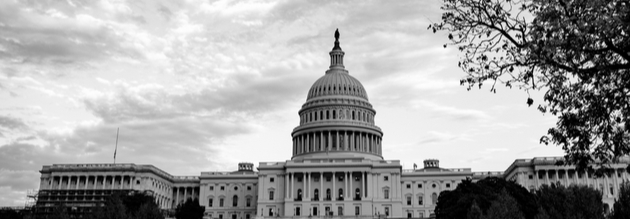









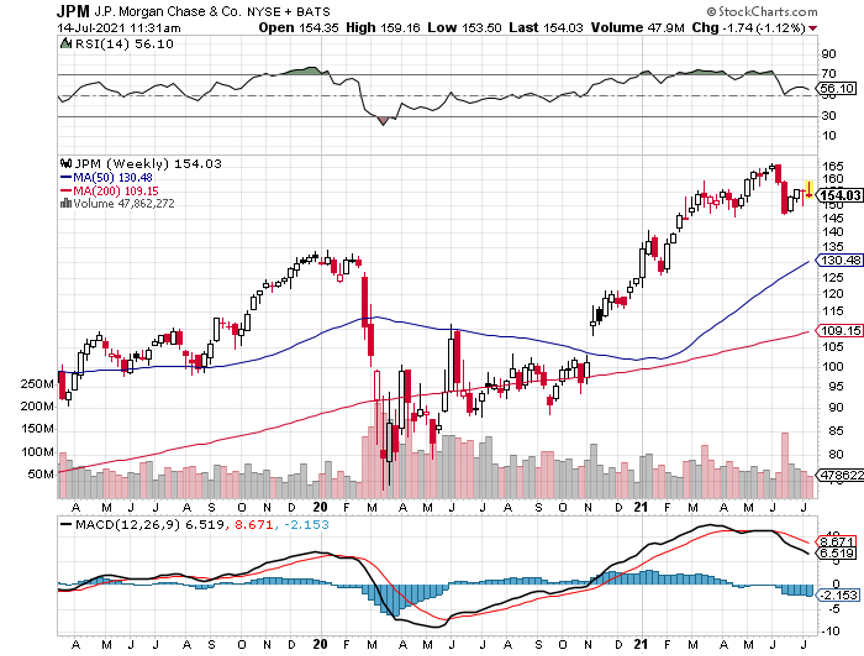
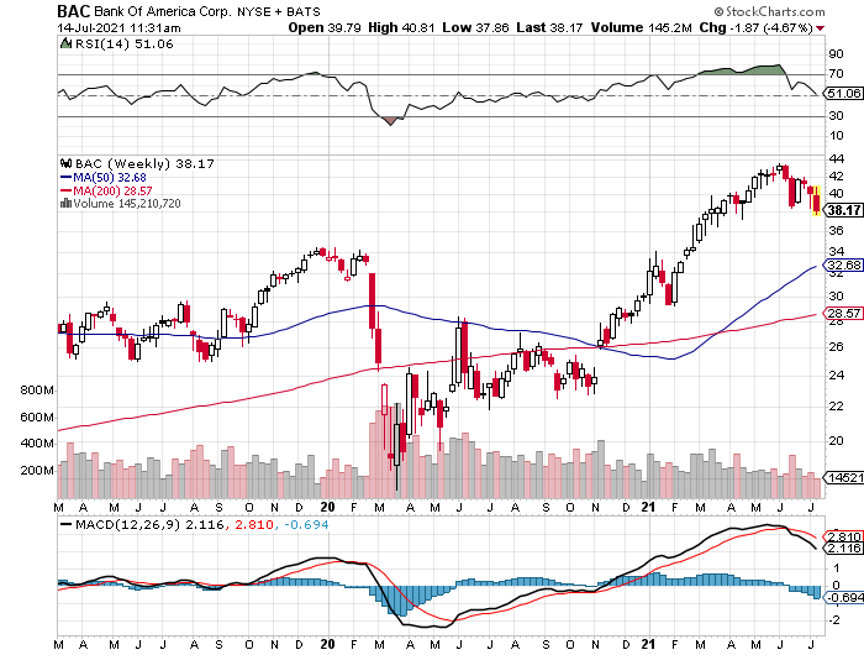
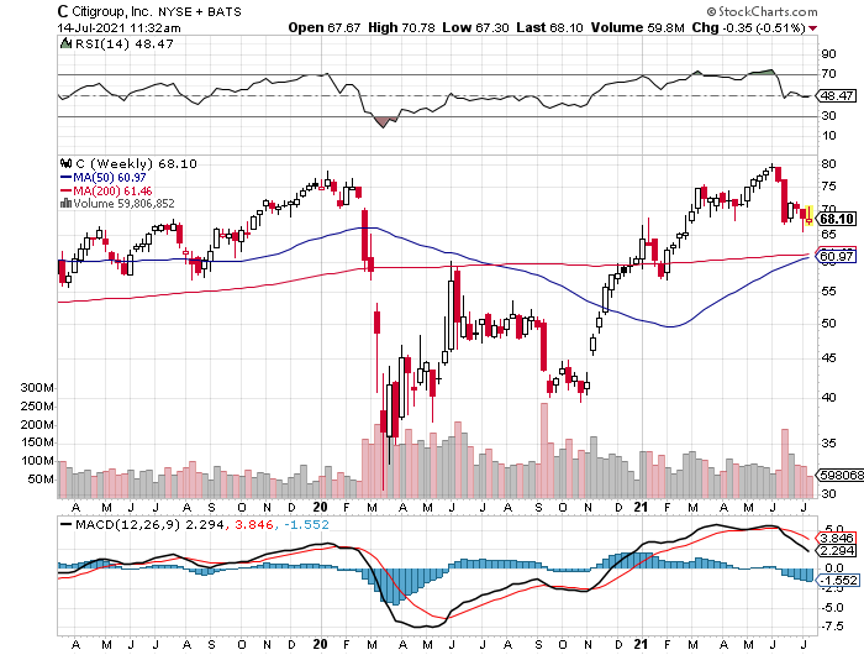
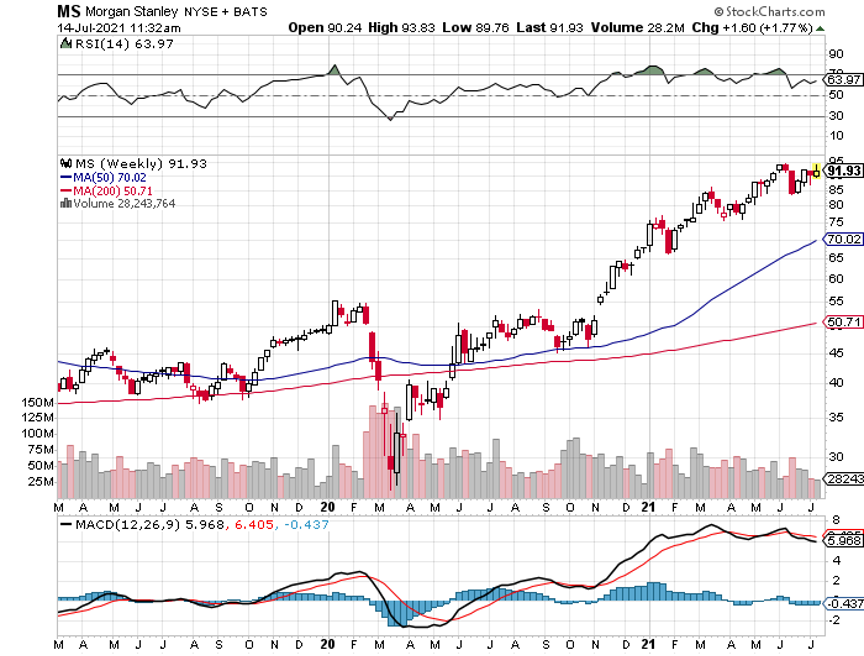
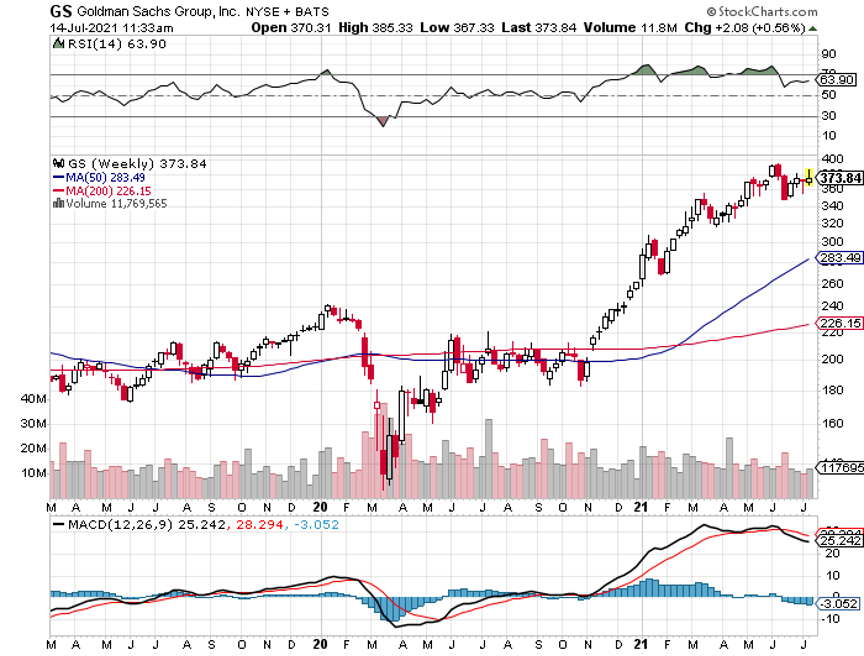
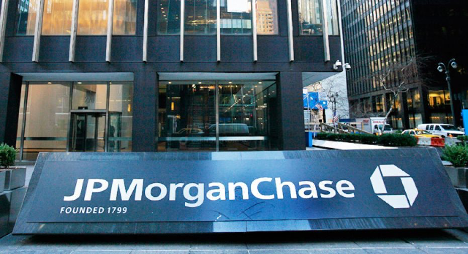




 Daemen family
Daemen family Membership Collective Group
Membership Collective Group Cayce Clifford for The New York Times
Cayce Clifford for The New York Times Erin Schaff/The New York Times
Erin Schaff/The New York Times Brendan McDermid/Reuters
Brendan McDermid/Reuters via ARQ
via ARQ .
. Jean-Marie Leroy/Rectangle Productions/TF1 Films Production
Jean-Marie Leroy/Rectangle Productions/TF1 Films Production

